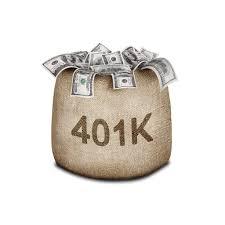
If you buy an annuity in pre-tax dollars, the annuity payments will be fully taxed as income. If you purchase an annuity with after-tax funds, you only have to pay income tax. Annuities offer a tax-deferred increase, which means annuity taxes only due when you withdraw money from the annuity.
One of the main tax benefits of annuities is that they allow investments to grow tax-free until they are withdrawn. This includes dividends, interest, and capital gains, which can be fully reinvested as long as they remain in the annuity. This lets your investment grow without being taxed.
But with that seemingly simple benefit comes a complicated set of rules about taxed funds, how they're taxed, and when they're taxed.
Due to the complexity, it is best to consult a tax expert when purchasing an annuity before withdrawing funds.
Are annuities taxable?
Annuities are tax-deferred. But that doesn't mean it's a way to avoid taxes altogether. This means that taxes are not due until you receive the annuity payments. Withdrawals and distributions of fixed amounts from an annuity are taxed as normal income. They do not have the advantage of being taxed as capital gains.
How are annuities taxed?
When it comes to taxes, the most relevant information about your annuity is whether it is held in a qualified account or not.
Qualified Annuity | Non-Qualified Annuity | |
Funded | Untaxed Money | After-tax funds |
Payments | Taxable as income | The exclusion ratio determines taxation. |
Tax on Qualified annuities
If an annuity is funded with money that has not been taxed previously, it will be considered an eligible annuity. Typically, these annuities are funded with 401(k)s money or other tax-deferred retirement accounts, such as IRAs.
When you receive payments from a qualifying annuity, those payments are fully taxable as income. This is because no tax was paid on this money.
But annuities purchased with the Roth IRA or Roth 401(k) are fully tax-exempt if certain conditions are met.
Taxation of nonqualified annuities
If the annuity was bought with after-tax funds, it is not eligible. Nonqualified annuities require tax payment only on income.
The amount of tax on nonqualified annuities is determined by what is called an exclusion ratio. The exclusion rate is used to determine how much annual income payments are not taxable and how much is. The idea is to ascertain the amount of a withdrawal or annuity payment on the capital already taxed and how much is considered taxable income.
The exclusion rate relates to the principle used to purchase the annuity, how long the annuity has been in existence, and the interest income.
If a beneficiary lives longer than the actuarial life expectancy, all annuity payments received after that age are fully taxable.
Indeed, the execution rate is calculated in such a way as to distribute the lump-sum deductions over the life expectancy of the beneficiary. After capital is recognized, any residual payment or withdrawal of income is considered income.
Example of exclusion rate
Your life expectancy is 15 years at retirement.
You purchased an annuity for $ 40,000 in cash after tax.
Annual payments of $ 4,000 (10% of initial investment) are not taxable.
Lives for more than 15 years.
The money you receive after 15 years of life expectancy will be taxed as income.
Annuity withdrawal taxation
When and how you withdraw funds from your annuity also affects your tax bill.
In general, if you withdraw money from the annuity before the age of 59.5, you may need to pay a 10% fine for the taxable portion of the withdrawal.
After this age, treating the tax as a lump sum rather than a stream of income will trigger the income tax. You will have to pay income tax for that year on the entire taxable portion of the funds.
If the money remains in your annuity account, the IRS considers the first and subsequent withdrawals to be interest and taxable.
Taxes on annuity payments
According to the General Pensions and Annuities Rule of the Federal Revenue Agency, any monthly annuity payment from an unqualified plan consists of two parts. The non-taxable part is considered as the profitability of the net acquisition cost of the annuity. The rest is the balance or taxable income.
When you earn income payments from your annuity, instead of withdrawals, the idea is to divide your principal and tax exclusions equally by the expected number of payments. The remainder of the amount of each payment is considered subject to income tax.
Inheritance Annuity tax
If you are a beneficiary and you inherit an annuity, the same tax rules apply. The main tax rule with an inherited or vested annuity is that any funded capital that was already taxable will not be taxed. Both capital and untaxed income will be taxed as income. The previously taxed principal amount included in each annuity payment is considered exempt from federal tax requirements and this is called the exclusion value.
FOR MORE INFORMATION ON Don Bell Law, PLEASE CLICK THE BLUE TAB ON THIS PAGE.
THANKS FOR VISITING.
Don Bell Law